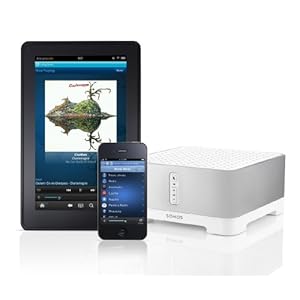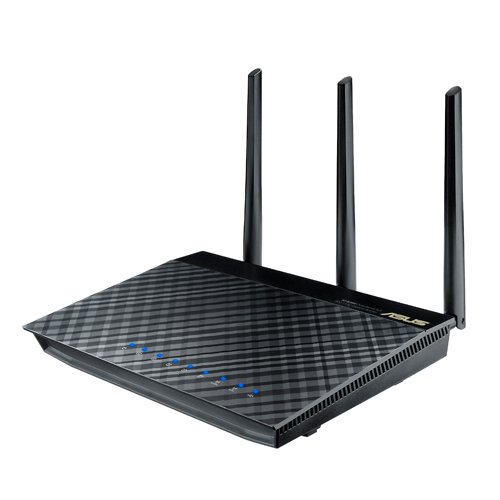-->
Cloud-based Music Services
There are several forms of cloud music services that offer different functionality depending on how you want to listen to music. One type of service operates like a storage locker, where you can store thousands of music files from your computers library and have them accessible on nearly any Internet-connected computer or mobile device.
Another is more akin to an Internet radio station that either plays curated mixes or randomized songs that are tailored to the sound of an artist or song that you select. Finally, a third type enables you to listen to as much music as you like on a computer or mobile device for a monthly subscription.
Some examples of music storage lockers include:
Amazon Cloud Player: As noted above, the Amazon Cloud Player allows you to store MP3 files on the Amazon Cloud Drive and then play them on any Internet-connected computer as well as select Android smartphones and tablets (running Android OS 1.6 and later).
Google Music Beta: Similar to Amazon's cloud music offering, the Google Music Beta service allows you to upload MP3 files from your computer hard drive to its cloud-based storage locker, and you can then access the music via a web browser on any computer as well as on Android smartphones and tablets. Additionally, you can create playlists in a web browser on your computer and have it replicated on your Android device. Any changes you make while accessing the music are synced across devices. Currently, Google Music Beta is free, but is limited to uploading 20,000 song files and requires an invitation.
Here are some examples of personalized cloud-based Internet radio sites:
Pandora: One of the most well-known music streaming services, Pandora helps you discover new music by allowing you to create a personalized radio station that plays music that's similar to a selected artist or song. This free service can be accessed from your web browser and it's also available via dedicated apps for a wide range of mobile platforms, including iPhone, Android, BlackBerry, and WebOS. Additionally, the Pandora service is available on many Internet-connected HDTVs and media streaming set-top boxes.
8tracks: Calling itself "handcrafted Internet radio," 8tracks enabled users to create a mix by uploading MP3s (a minimum of 8 songs) and then sharing those mixes either publicly or just with friends. But you don't have to be a DJ. You can simply browse through mixes to discover new music and then follow your favorite 8tracks users.
Subscription-based cloud music services include Rhapsody and Napster, and both provide streaming capabilities via a web browser as well as dedicated apps for iPhone and iPod touch, Android devices, and BlackBerry smartphones. Monthly subscription rates range from $5 to $15 a month, depending on how many devices--in-home and mobile--you want to connect with the service.
In addition to mobile devices, Rhapsody can be accessed via the
Sonos in-home streaming system and select
Vizio HDTVs, while Napster can be streamed via the
Xbox 360 plus
Sonos. However, one downside of music subscription services is that you don't own the music--so once you cancel a subscription, your favorite music and playlists will be gone.
Cloud-based Video Services
The benefit of cloud-based video services -- instant gratification, no discs to return either to the video store or pop in the mail.
Amazon Instant Video: Choose from thousands of TV shows and movies to rent or buy from Amazon Instant Video, which will stream commercial free through your computer's web browser as well as a variety of home entertainment devices. Movies can either be rented for a period of 24 to 48 hours (depending on the title) or purchased, enabling you to watch it as many times as you want for as long as you want. Individual TV episodes can be purchased, or you can choose to buy a TV Pass that will give you access to all of the season's episodes.
In addition to streaming to a web browser on a PC or Mac, you can watch Amazon Instant Video titles instantly on your TV via compatible Internet-connected HDTVs from Sony, Samsung, and Vizio plus Blu-ray Disc players from Sony and Panasonic. Amazon Instant Video is also available on a variety of set-top boxes from Roku, TiVo, and Sony, plus the Google TV service available on the Logitech Revue and select Sony HDTVs and Blu-ray Disc players.
And if you're an Amazon Prime member, you'll also get access to free streaming of a selection of over 5,000 commercial-free movies and TV shows as part of your Amazon Prime membership.
Learn more about home entertainment devices compatible with Amazon Instant Video:
Apple iTunes: Purchase or rent movies and TV shows through Apple's iTunes software, which can be downloaded and viewed on PCs and Macs as well as iOS devices. With the latest version of the Apple TV, you can stream movie and TV show rentals directly to your HDTV.
Google TV: More of a platform than a video streaming service, Google TV allows you to search TV listings and a connected DVR as well as the web to watch streaming videos from favorite web sites. It also includes apps that provide direct connections to such streaming services as Netflix, NBA Game Time, Pandora, and Napster. Its available via the Logitech Revue set-top box as well as integrated into select Sony HDTVs and a Blu-ray player.
Hulu: This ad-supported library of TV shows and movies can be can be streamed to your web browser for free. However, its Hulu Plus paid subscription service (which also serves up ads) offers a larger selection plus HD video streams, and it can be accessed on Apple iOS devices, Roku set-top boxes, and a variety of Internet-connected HDTVs and Blu-ray players.
Netflix: Originally a DVD rental-by-mail service, Netflix allows subscribers to stream movies and TV episodes via select Internet-ready HDTVs, game consoles, set-stop boxes (like Apple TV, TiVo and Roku), and Blu-ray Disc players.
Vudu: Rent and purchase movies (some available in 1080p HD) and stream them to your computer, Boxee Box, Sony PlayStation 3, and select Internet-ready HDTVs.
YouTube: Video sharing site that allows you to post your own video creations, plus view clips from millions of other users. It's also begun to offer thousands of full-length movies for rental. YouTube is included on a wide variety of media streaming devices, however movie rentals are available only to computer web browsers.





















